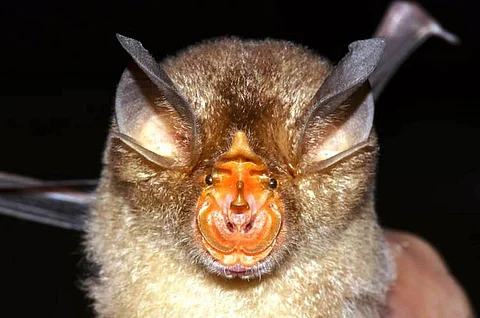

The Munnar Wildlife Division in Idukki has identified seven rare bat species in Kerala. These species were spotted in Munnar during a bat survey carried out by the Division, last month, in five protected areas in the district. A total of 20 bats were spotted as part of the survey.
Of the 20 bat species, 17 are insectivorous bats (or microbats) while the remaining three are fruit bats. The team will release the names of the seven new species once it is published in a journal.
Hipposideros galeritus (Cantor's Leaf-nosed bat), Hipposideros pomona (Anderson's Leaf-nosed bat); Myotis peytoni (Peyton's Whiskered Myotis) and Harpiocephalus harpia (Lesser Hairy-winged Bat) are some of the rare bats that have been identified during the survey, said Chinnar Assistant Wildlife Warden PM Prabhu. Some of these species have been recorded in the state earlier.
“The survey was conducted using advanced bat monitoring detectors along with the traditional methods. Individual bats were identified based on their unique echolocation calls emitted by these insectivorous bats,” says Prabhu.
Rhinolophus indorouxii
As part of the survey, devices were installed at various locations inside Eravikulam National Park, Mathikettanshola National park, Anamudishola National Park, Pampadumshola National park and Chinnar Wildlife Sanctuary, all in Idukki district.
The survey also highlights the need for long-term monitoring of bats to understand the impact of climate and vegetation changes on bats and other wildlife in Munnar landscape.
Speaking to TNM, Sreehari Raman, a bat researcher and PhD scholar at Chinese Academy of Sciences, explains, “Climate change has been identified as one of the greatest, long-term threats to most bat species globally. The change in climate conditions may induce significant changes in the vegetation and forest biomes. This may lead to a shortage of food availability and will force species to shift their range towards higher latitudes and elevations.”
Sreehari, who headed the survey team, adds, “Species already living at high elevation areas may not have space to shift and be locally extirpated. To understand the current status of the species that have a restricted distributional range in these mid-high elevational areas of Western Ghats, especially in a place like Munnar, further studies have to be carried out for the long-term conservation of bats and other wild fauna.”
Prabhu also points out that bat surveys are rare. “These animals help in the pollination of different plants and trees, especially the night-blooming plants," he adds.
The bat survey was led by Lakshmi R, Wildlife Warden of Munnar Wildlife Division, Sameer MK, Assistant Wildlife Warden of Pampadum Shola National Park, Prabhu PM, Assistant Wildlife Warden of Chinnar National Park and Sandeep S, Assistant Wildlife Warden of Eravikulam National Park.
In addition to Sreehari, the survey team was headed by Sailsh Menachery, Wildlife Assistant, Munnar Wildlife Division and Rajan Pilakandi, ecologist, Munnar Wildlife Division.